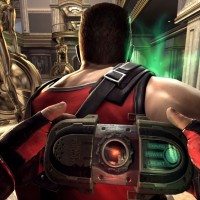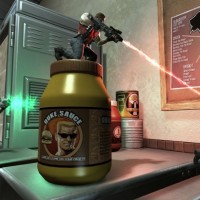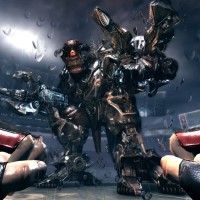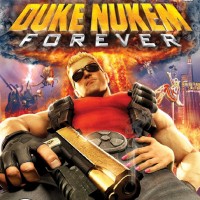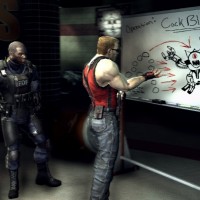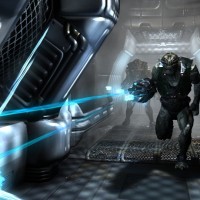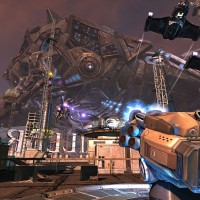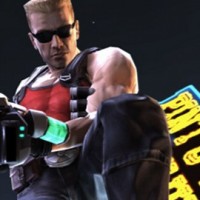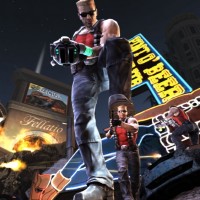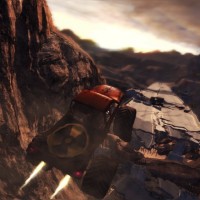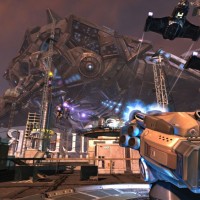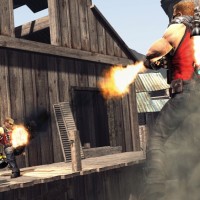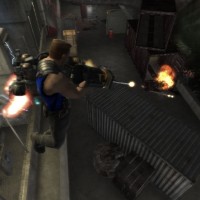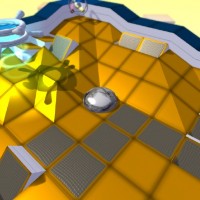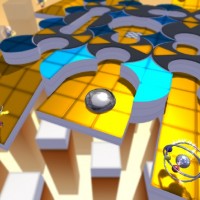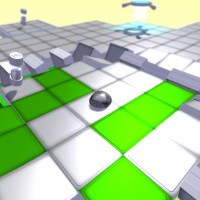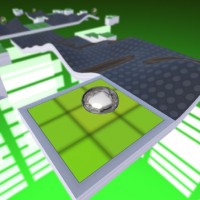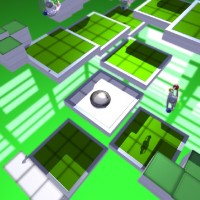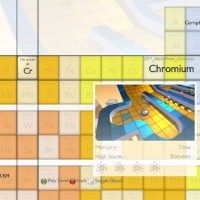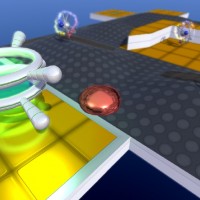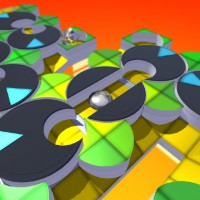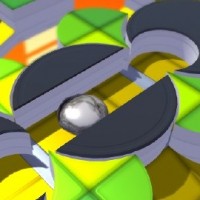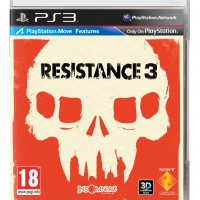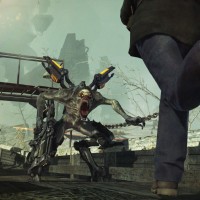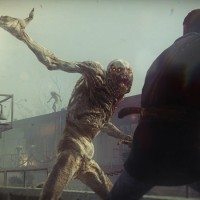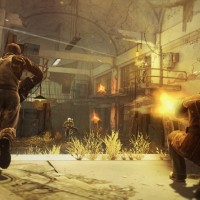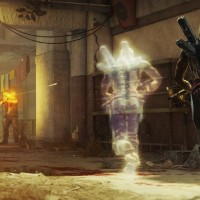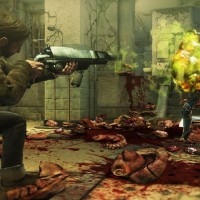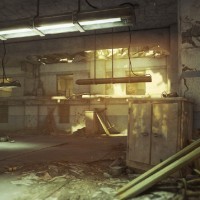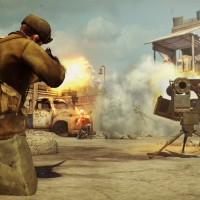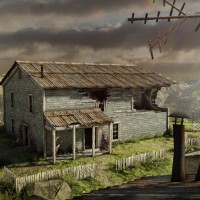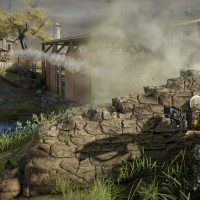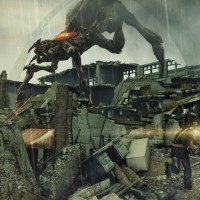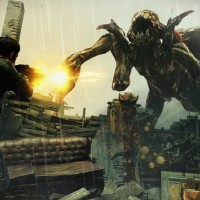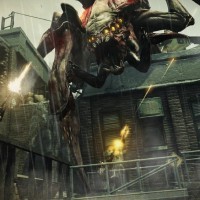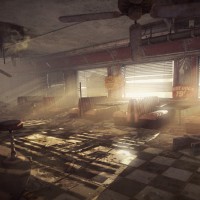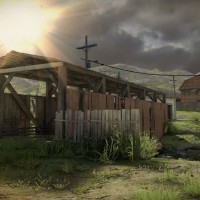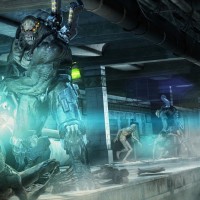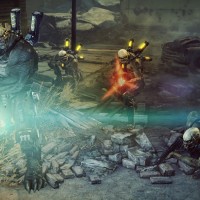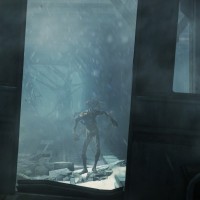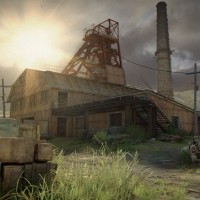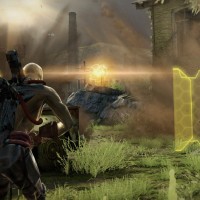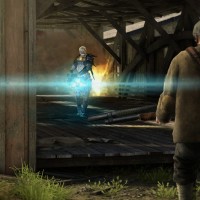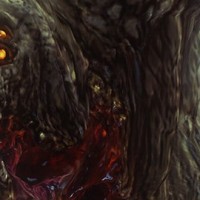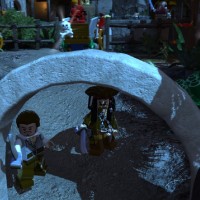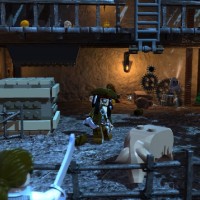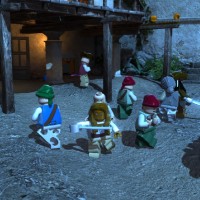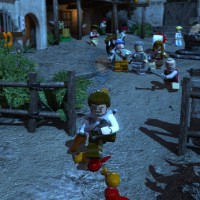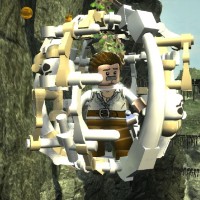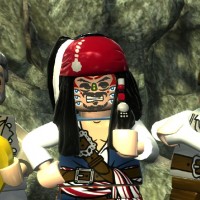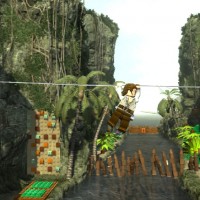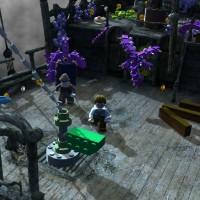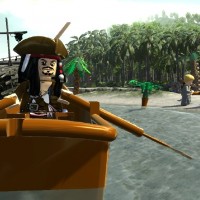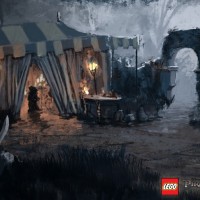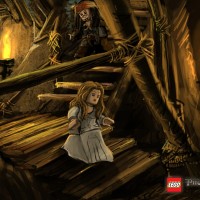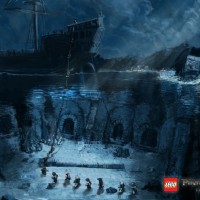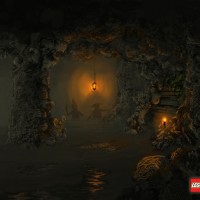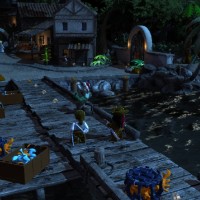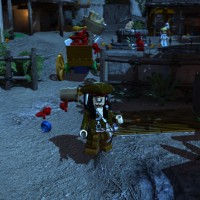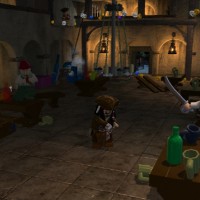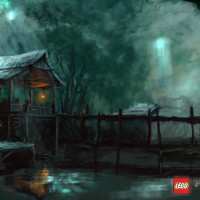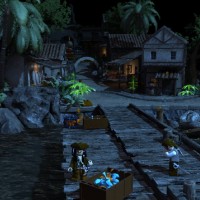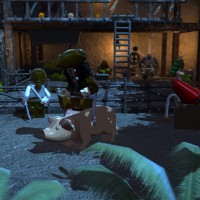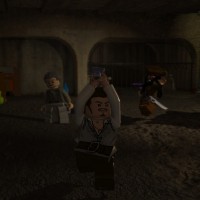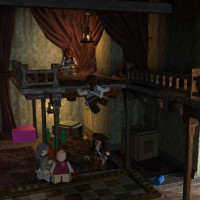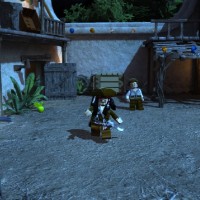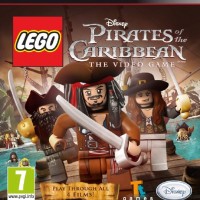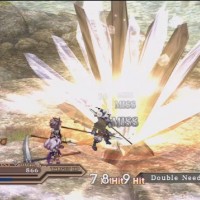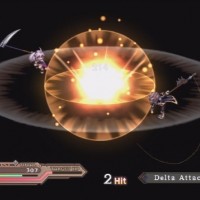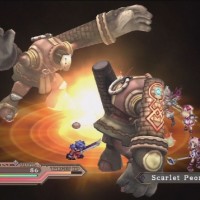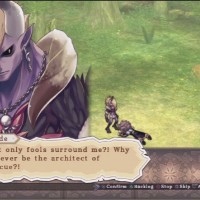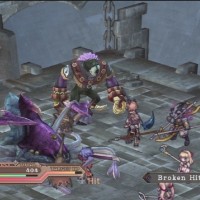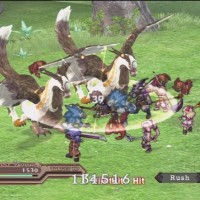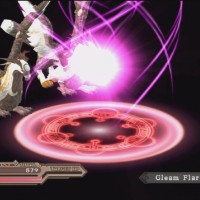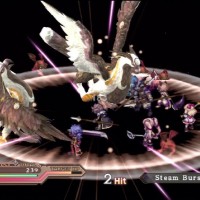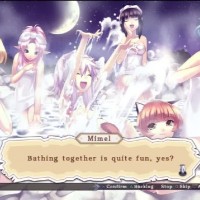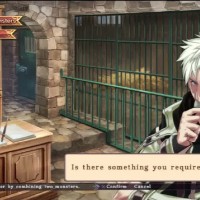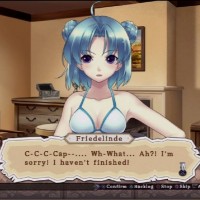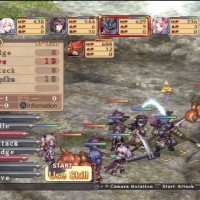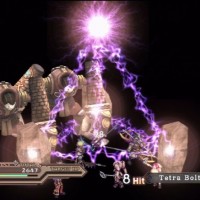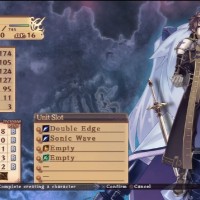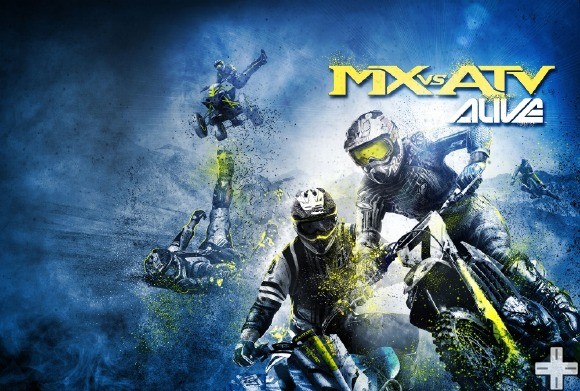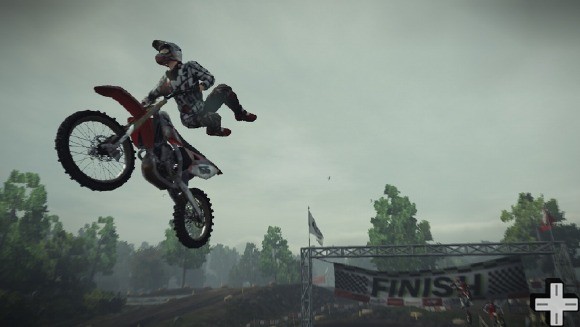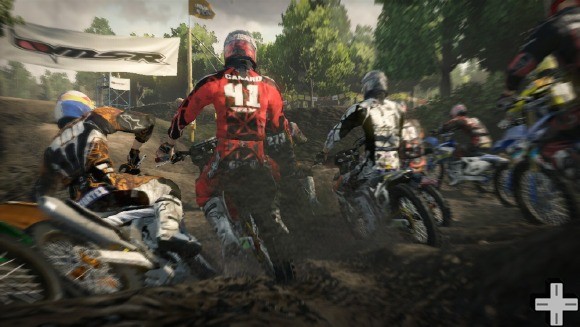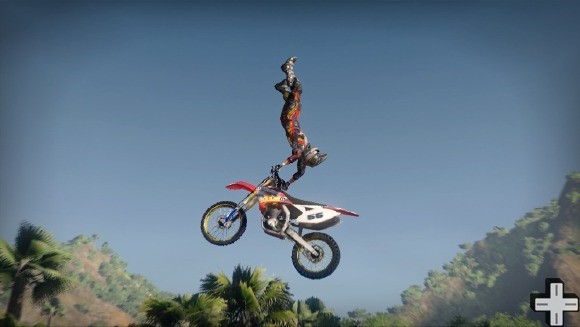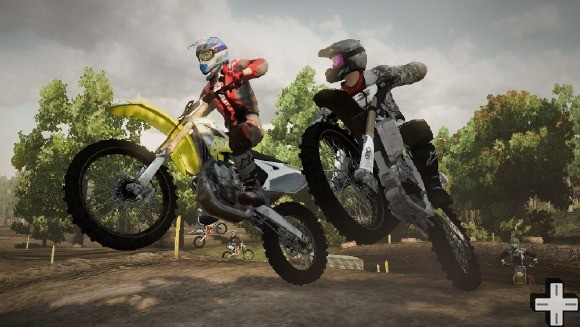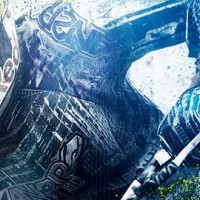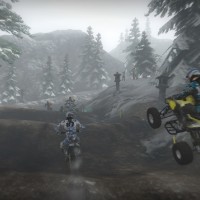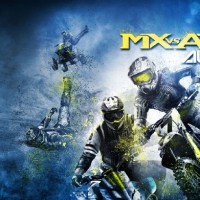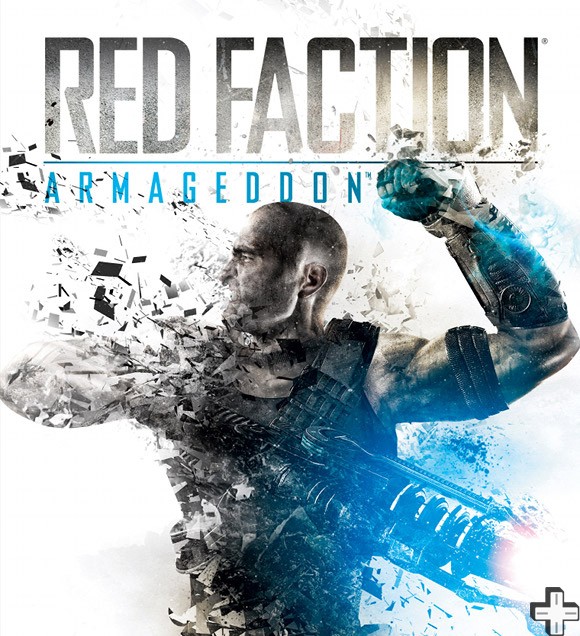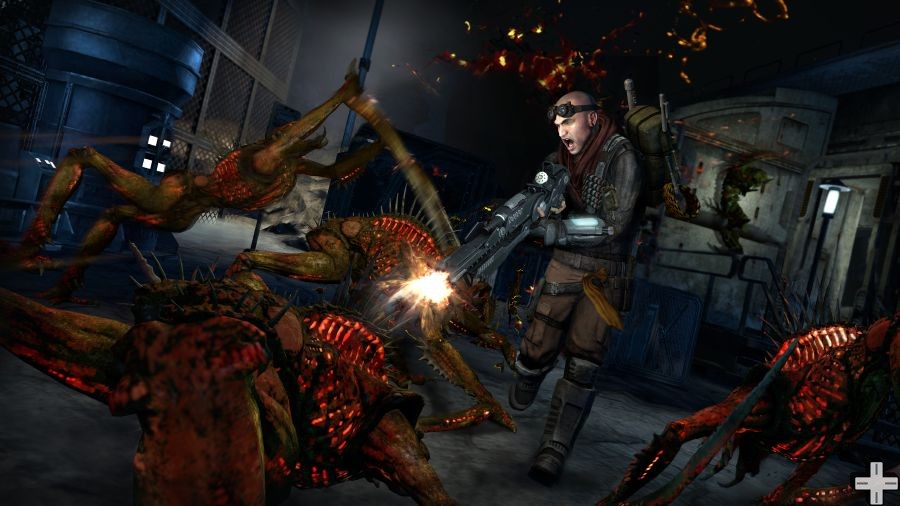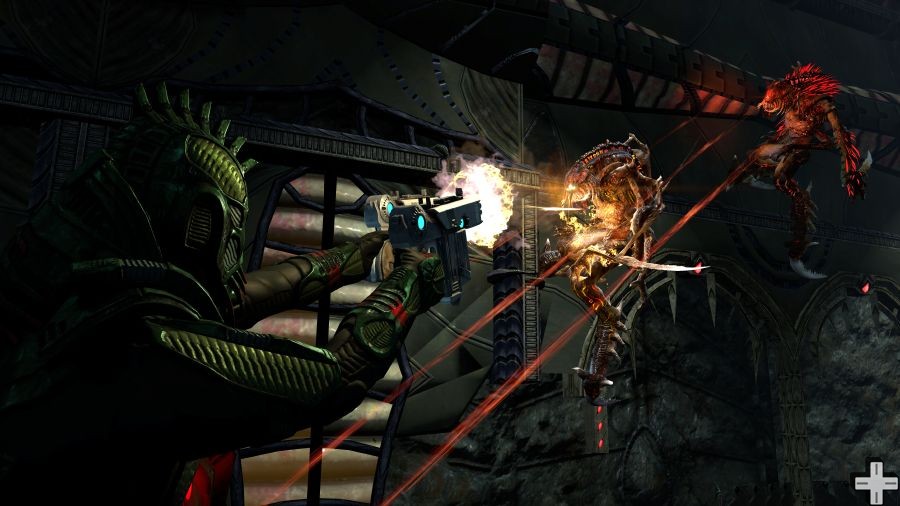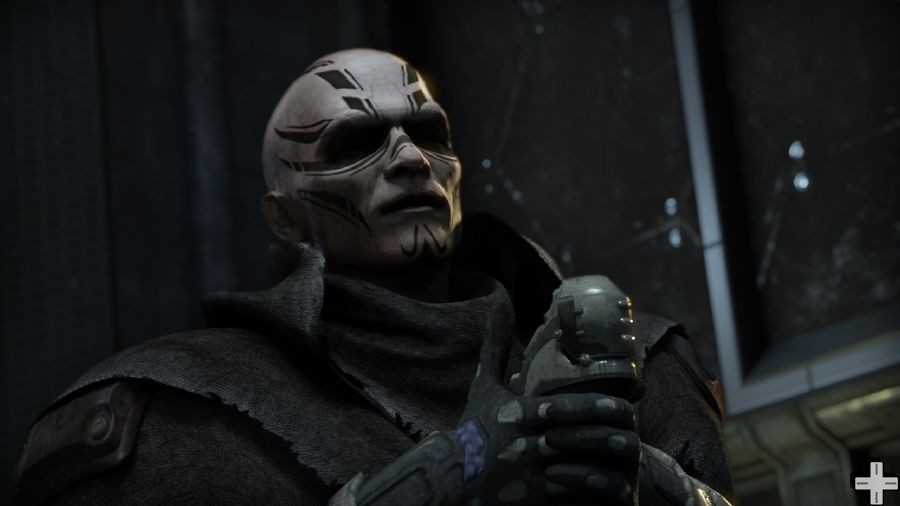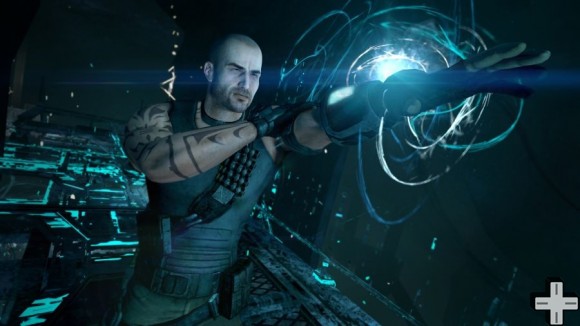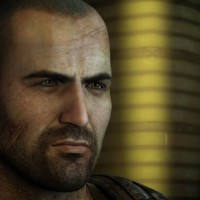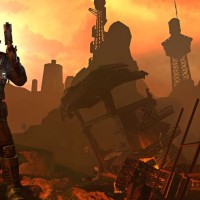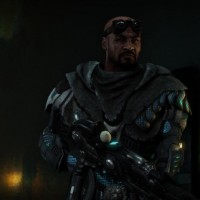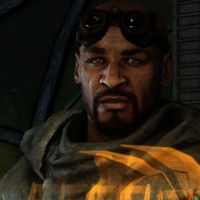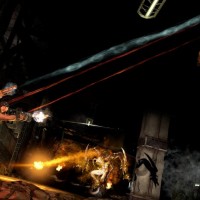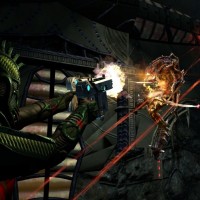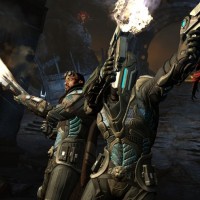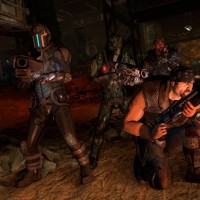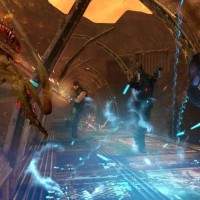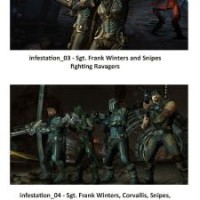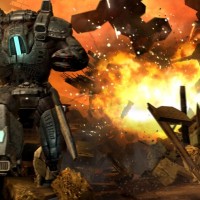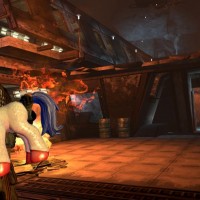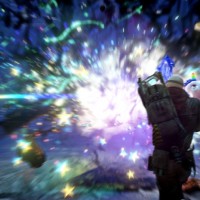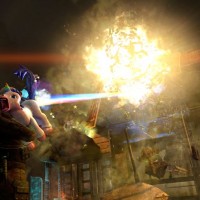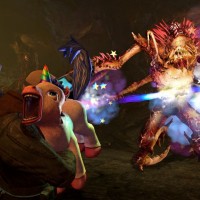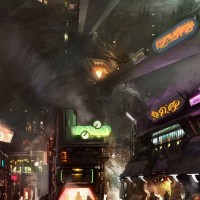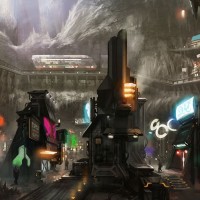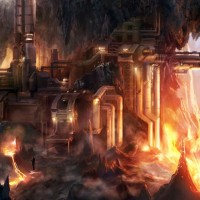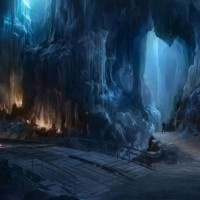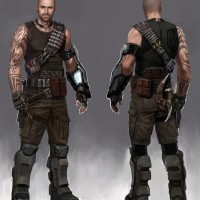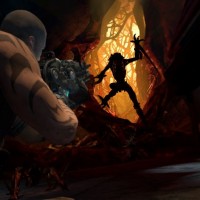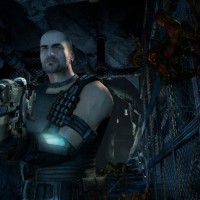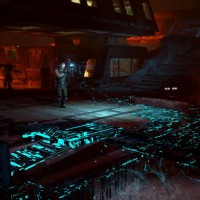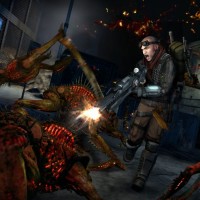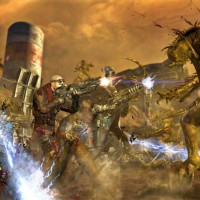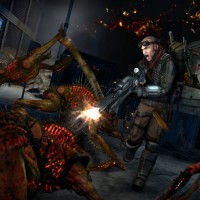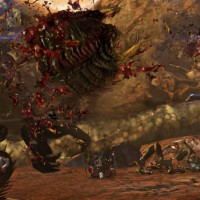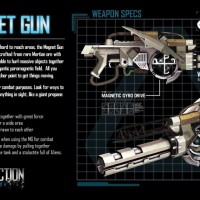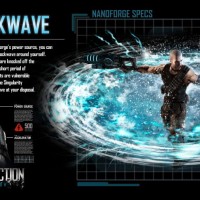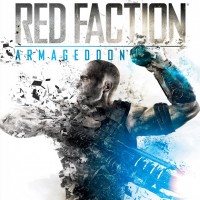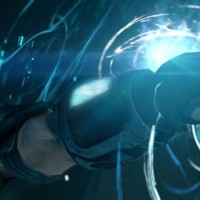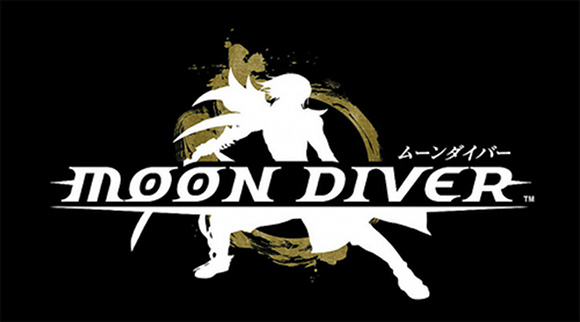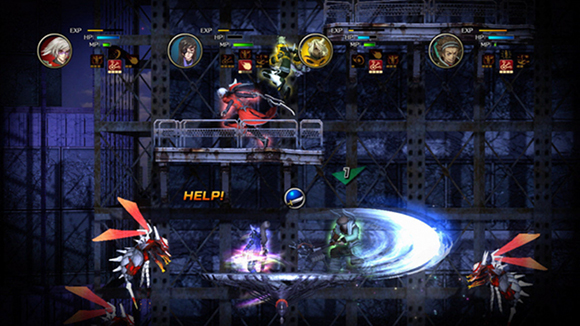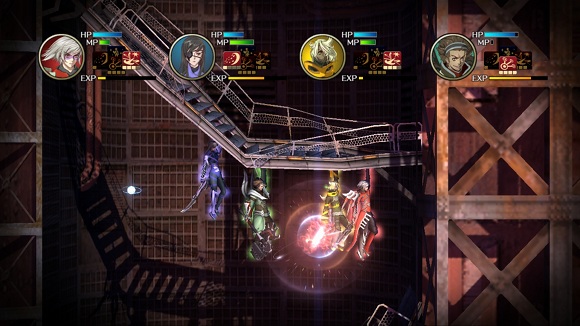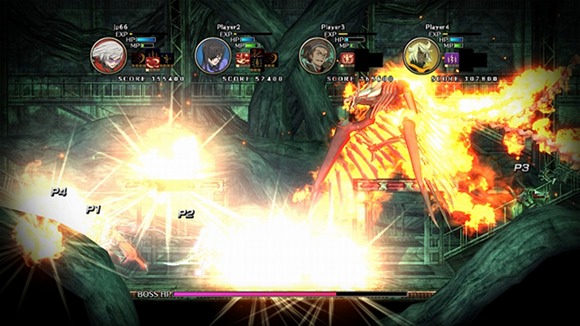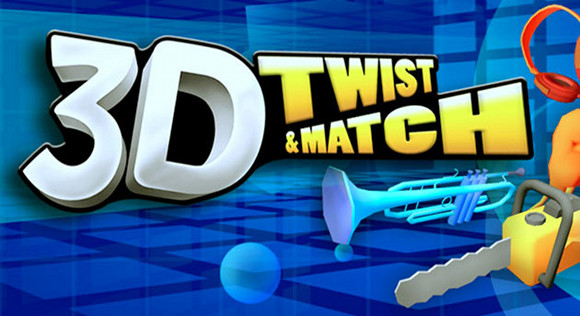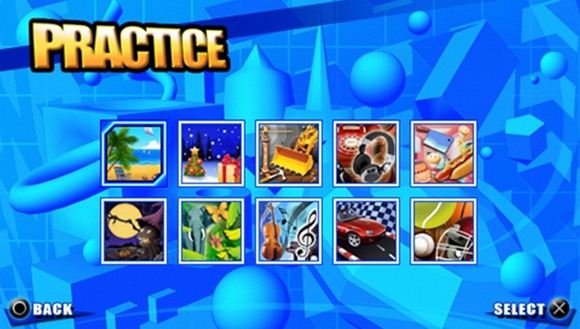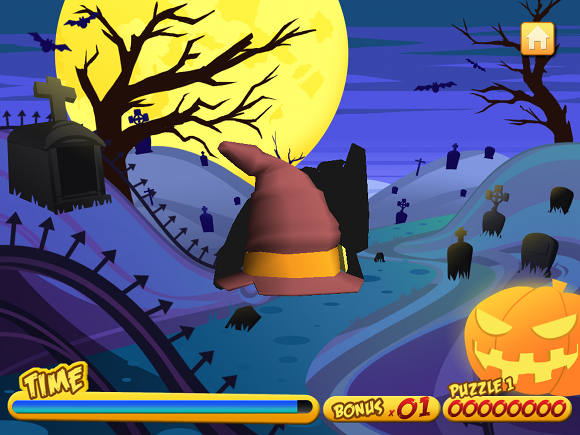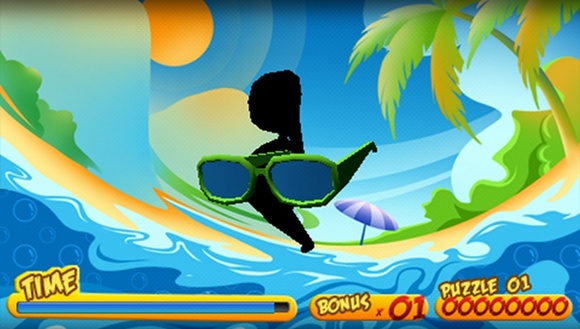Duke Nukem Forever

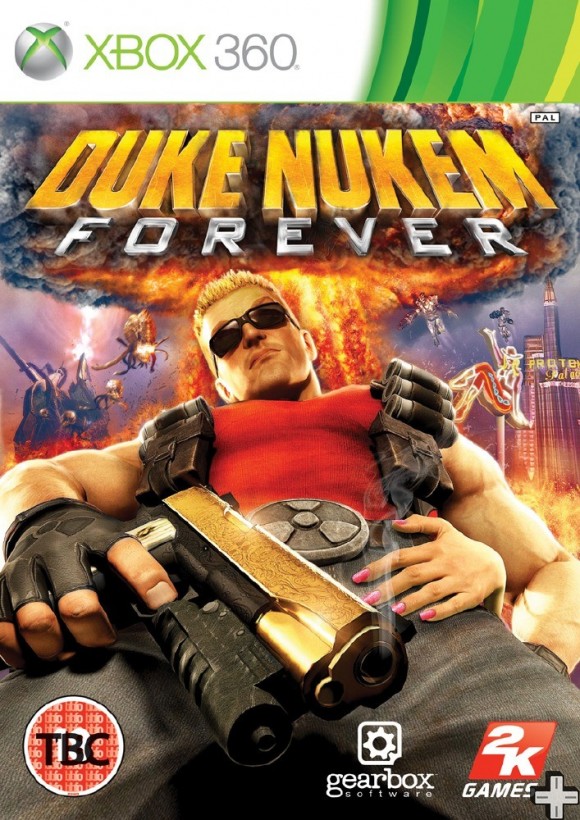
It seems unbelievable that people would wait 12 years to get their hands on a sequel to, well, anything. And yet fans of Guns N Roses waited for Chinese Democracy, fans of Indiana Jones waited even longer for The Kingdom of the Crystal Skull. For gamers, Duke Nukem Forever is their Chinese Democracy. Now it is finally on the shelves and in our faces, was 12 years too long to wait or was it worth every second?
From the moment the game begins, it is like nothing has changed. Duke is still the beer swilling, trash talking, babe loving muscle head that he was back in the 90s. For those who haven’t played the game before, imagine Rambo with a sense of humour and a love of strip clubs. Set in Las Vegas, in a time where Duke single handedly saved the planet from Alien-pig monsters, everything appears to be going swimmingly. That is until the aliens return wanting revenge, and this time they kick Duke where it hurts – they have come for the babes!
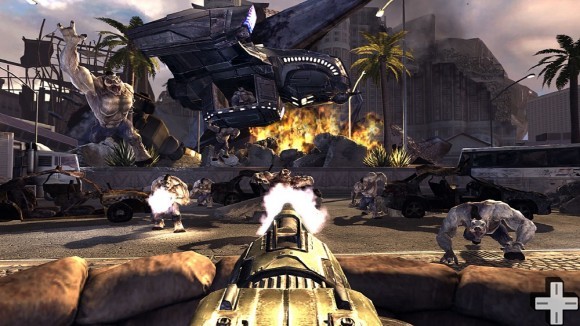
Not one for sitting back and taking it, The Duke sets off on a rampage to save the world and the babes once again. Duke Nukem Forever continues the first person shooting dynamic as seen in Duke Nukem 3D. As with any modern game of this genre, the control system is key and while the Duke has a similar layout to other FPS games, they feel too unresponsive and slow to use. Reloading takes so long that it is a distinct possibility that Duke will be on the floor dead than being able to finish off a nasty alien.
Clumsy controls aren’t the Duke’s only problem either. He has to contend will an uninspired environment that looks as old time itself. Outside in Vegas, the post alien invasion scenery is an array of grey concrete and grey buildings with a few upside down cars. Inside things do not get much better. Dark and gloomy corridors look flat and boring as there is nothing to interact with. If a painting is shot, a grey bullet hole appears, instead of exploding into a million pieces. It feels as if no attention to detail was carried out when putting the game together.
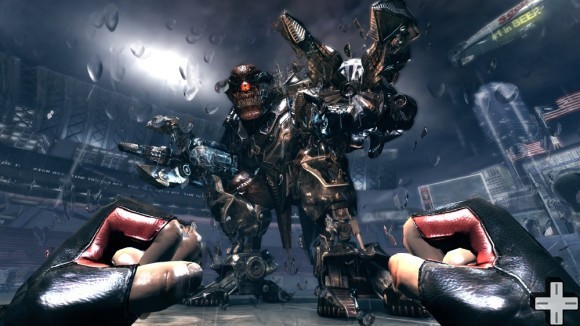
It isn’t all bad though, Duke Nukem Forever does have redeeming features. The health system that has been built into the game is a touch of genius. Rather than relying on health, Duke relies on his “Ego” to save the day. When hit, his Ego takes a bruising. If it gets hit enough, then he will die. However, Ego can be gained by interacting with items such as looking in a mirror or killing the boss at the end of a level. This presents a style that only Duke Nukem can pull off.
Furthering Duke’s style is that it’s not just blasting aliens in the face with a big gun, no. Throughout the game, players are advised to conserve ammo and use melee attacks instead. While presenting more of a challenge, this means there aren’t any of those annoying moments where Duke is cornered by a big son of a gun because he wasted all his ammo on the smaller and insignificant Alien scum.
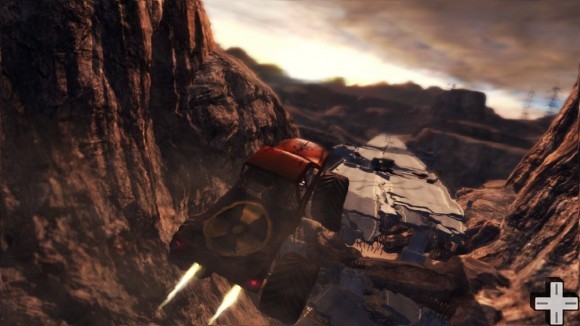
Getting to the action is another problem encountered when playing Duke Nukem Forever. The game has severe loading issues. Each level is typically broken down into 3 parts with a boss at the end of it. The loading times between each part is appalling as it takes a good couple of minutes to load. This wouldn’t be such a problem if the levels were huge and open, but they are not. Also, if killed in battle, the game will reset back to the last checkpoint but will have to load the entire part again, so gamers are kept waiting. There are interesting facts about the game to keep players occupied but this does little to calm the frustration of seeing yet another loading screen.
The length of the levels may seem linear but The Duke does a lot to keep occupied. The classic one liners such as “Good, Bad, I’m the guy with the gun” Or “It’s time to kick some ass” are all back and it is nice to be hearing them once again. Other new features include beer swilling, which makes Duke more durable and less susceptible to damage. Steroids increases the strength of melee attacks. The negative side to taking drugs and drinking beer is that the screen does blur and makes it harder to focus the attacks. The Holoduke is a more comical weapon. When activated, a holographic Duke will appear and draw attention away from the real Duke. This is especially handy when fighting a big gaggle of aliens as the real Duke becomes invisible. Holoduke does have the same one liners in a robotic voice but does tend to fluff them. It doesn’t affect anything, it’s just humorous to watch.
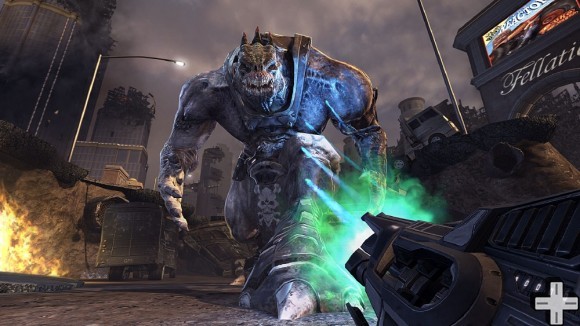
That is the thing with Duke Nukem Forever, it is a fun title in the sense it’s Duke’s humour and even after 12 years, the slightly sexist vibe in the game is still funny and brings the old saying to mind: “the don’t make them like they used to.” However the rest of the game proves why they don’t make games like this any more. It is unfortunately an average game. The level design and control system is something that would have worked 12 years ago on the PlayStation 2 or Xbox. But in 2011 gamers demand tighter controls, bigger levels and less loading to have more fun. 12 years ago, I would have had no doubt that this would have set the standard of First Person Shooting games. But it just appears dated and boring. It does however have a few moments of pure joy, the one liners, the gags and the story are all good but they are counter balanced by the negative. If there is a follow up, Duke should learn a lesson from this outing: don’t stay away too long so that next time it will be a more relevant and appealing attempt.
Mercury HG

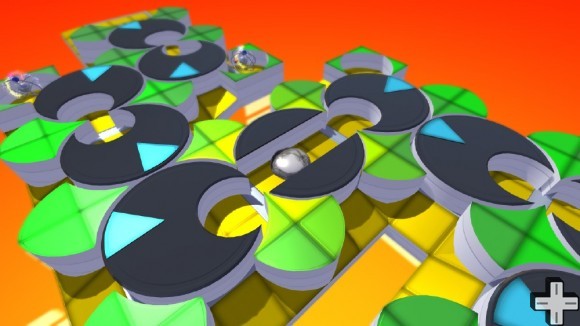
On paper a game based around The Periodic Table Of Elements isn’t the most exciting subject in the world. It sounds like a lot of learning! However the chaps over at Eiconic Games Ltd will challenge anyone to think again! Mercury HG is a puzzle game for the PlayStation Network with a simple aim, getting what could only be best described as a blob of mercury from the start of a maze to the goal.
If this did not seem hard enough, the developers have added in a wealth of collectables, obstacles and puzzles to make sure the game is challenging enough to keep coming back for more. To start with, the game has two modes, Discovery and Challenge. Discovery mode is made up of 60 standard levels. This is then split into element groups. Progression is made by completing the maze as quickly as possible, collecting items and making sure no Mercury is lost over the edge of the level.
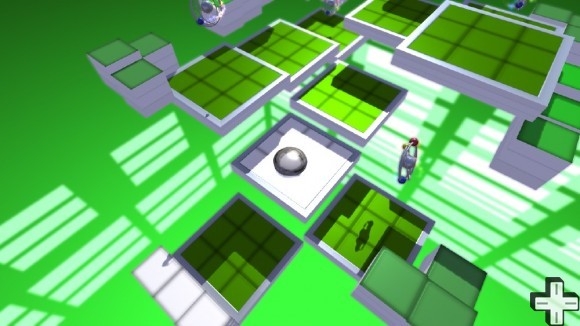
Challenge mode removes the need for a timer and replaces it with a series of challenges that must be beaten in order to progress to the next element. Learning to control the blob is the key to progress through the game. Taking a leaf from games such as Marble Madness, the mazes rather than the Mercury itself is manipulated. This means that stopping distances and cornering all have to be thought about quickly or else it is very possible to over shoot edges. Where this is different to Marble Madness is that if the blob only hangs off the edge of a level, only that part will fall off.
This is good as it means less of those annoying restarts but it means to finish each element with 100% accuracy takes time, especially as the game progresses. To move the blob in Mercury HG, there are two control types. The standard analogue movement with the left stick and Sixaxis control. Motion controlling the mazes is, at first tricky but can be mastered in time, but it is down to the player which style feels more natural. Both modes of control feel equally balanced and worked on well.
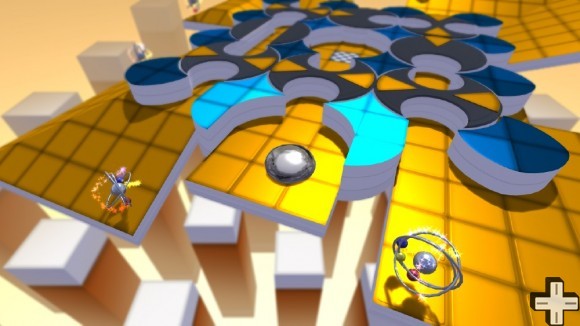
The choice of control isn’t the only option in Mercury HG. Music that has been uploaded to the PlayStation can be played as an alternative to the in game soundtrack. This function is rare in many full PlayStation games, let alone a Network title. This isn’t saying that the tracks in Mercury HG are awful, far from it! They are psychedelic dance tracks and suit the game very well indeed. However whatever music is playing, be it the in game dance track or a hardcore death metal song, the mercury and backgrounds pulsate to the beat of the bass.
It is small touches like this that give Mercury HG its charm. Combined with an excellent level design and a well designed control system it makes the game a fresh take on the puzzle genre. The idea of basing a game on the Table Of Elements is a great idea, but does limit the game to the number of levels available. Even though there are a few difficult levels that will test everyone, once they are beaten, only the leader boards encourage players to return to the game and try to be the best.
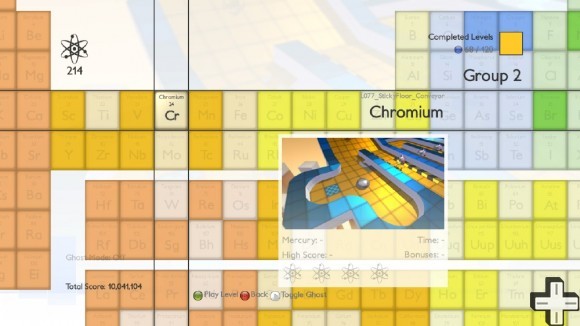
Mercury HG is an addictive and challenging game. Many hours will be lost chasing that perfect score for each level or unlocking absolutely everything the game has to offer. With a great interactive level design, and even downloadable content it just goes to show that great games can be found on the PlayStation Network, not just the AAA titles in the shops!
Resistance 3

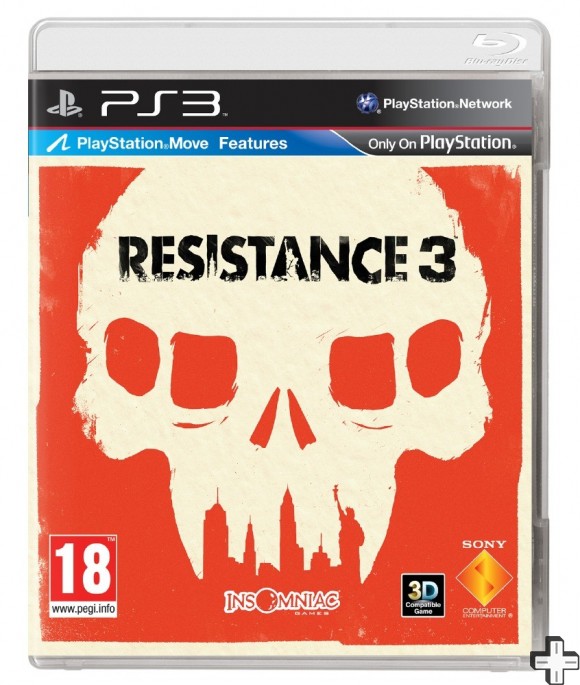
When PlayStation3 exclusive, Resistance 3, hit British shores it saw gamers in their thousands racing for the counters, eager to grab a look at the latest alien-repelling shooter – and we can see exactly why. Whoever said that ‘two’s company but three’s a crowd’ never passed the memo to Insomniac Games, with the third instalment of the Resistance franchise only building on the successes of its predecessors.
From the moment you take control of Joseph Capelli, an ill-fated freedom fighter from Oklahoma, Resistance 3 takes you by the scruff of the neck and immerses you in its world. Creepy low-light sequences see you scuttling through cramped and suffocating tunnels so convincing that the intensity is immediately turned up to 10, and the games’ post-apocalyptic cities are beautifully laid out on a scale that is only a testament to the developer’s improvement of the series. Its overlaying soundtrack could be considered a mite understated but is definitely worthwhile, with vast battle scenes often punctuated only by the sound of enemy gunfire and slower scenes made all the more atmospheric by the addition of haunting music and SOS radio callouts from other survivors. The treacherous journey from Haven,Oklahoma, to the snow covered wastes ofNew York in a fight against alien oppression is wonderfully rendered and it’s a rarity that a level feels like more effort than it’s worth.
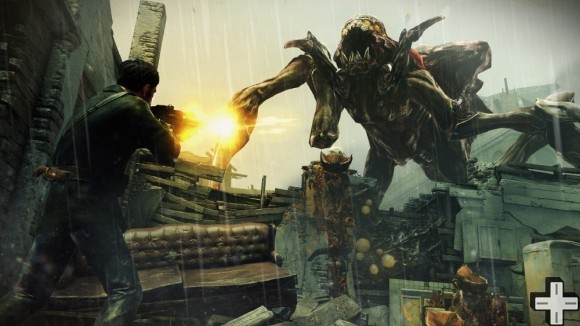
The player is truly spoiled for choice in the weapon department as the wheel-based selection system returns from the original instalment (Resistance: Fall of Man). While old favourites return from previous incarnations, like the enemy tracing Bullseye and the wall penetrating Auger, there are plenty of new weapons to turn your head. The sledgehammer adds a brutal element to melee combat and the Mutator allows humanity to turn the tide by infecting the Chimera with a virus of their own, causing the aliens explode in waves until none are left standing. The introduction of a weapon upgrade system also makes for a more enjoyable experience and admirably spurs players to experiment with weapons normally left to gather dust in the armoury. Continual use of a weapon earns the player experience points and unlocks additional fire modes and abilities, opening up whole new ways to fight off the alien invaders.
Insomniac Games have notably improved the AI in this newest release, making the Chimera a more deadly opponent than ever before. Enemies are no longer the gung-ho warriors of old; striding out into hails of scripted gunfire in a blatant show that allies are for atmosphere rather than assistance. The new Chimera hug to cover and pop out to take their chances as a soldier would – often flanking your position before pouncing in a surprise hit-and-run attack. Many of the Chimeran enemies will be familiar to returning players, but new and more realistic skins will leave everyone impressed with the level of detail on each enemy. While new enemies such as Chimeran jet-pack troops are bound to leave your blood-boiling with their elusiveness, the most memorable new foes are the Mad Max inspired ‘Wardens’ – a mob of bloodthirsty human survivors hell-bent on making Capelli’s journey a deadly one. A welcome change of pace if ever there was one.
The new title does away with the 8 player Co-op Campaign from Resistance 2, but heralds the return of a more standardised Co-operative Campaign mode from the original game, with a fresh approach to ensure that teammates work together as a unit. Losing the last of your health initiates a timer that, once it reaches zero, spells game over for the partnership unless the surviving member can get close enough to heal his comrade in time. This new approach is a welcome addition and makes for some mad cross-level scrambles when a player unexpectedly falls to enemy fire. The result is a fun and team oriented experience, with thrills added from players roaring each other into action to heal one-another in time before being forced to start all over again.
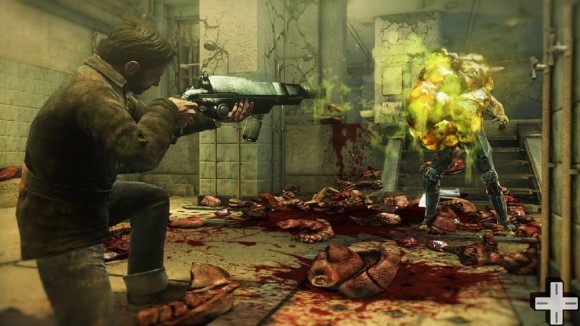
Resistance 3 boasts a 16 player multiplayer mode which runs smoothly and lures plenty enough players to ensure full and competitive matches. The upgrade system from Story Mode also makes an appearance here and certainly adds an element of individuality to proceedings. With many of the formidable weapons only becoming available after hours of online gameplay, players will have to practice to make perfect if they aspire to top worldwide deathmatch leader boards. There are a good selection of maps and modes, and mastery of them all will allow for many hours of gameplay for new and experienced players alike.
Resistance 3 offers an interesting tie in with a free-to-play online strategy game, Global Resistance, which can be linked to the player’s Facebook and PlayStation Network accounts and offers exclusive unlockables in the main game to those interested in joining the community. Players may choose to fight on the side of the either humanity or as the Chimeran menace and compete in a huge scale war with both individual and team based objectives. While the ins-and-outs would take too much room here, anyone looking to buy Resistance 3 should definitely join the worldwide war from www.myresistance.net/global.
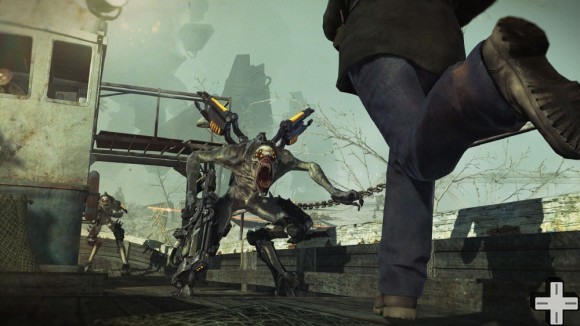
Despite all of the obvious positives, Resistance 3 might feel just a tad disappointing. The fast-paced story keeps you on edge through every event in Capelli’s journey, but those events seem to be spent incredibly quickly. Hard-core shooter fans will plough through the single-player campaign it in a single sitting without much trouble unless playing on one of the harder difficulty settings. The multiplayer mode is both sharp and busy enough to pick up and play regularly for decent periods but does nothing revolutionary enough to snatch fans away from established series such as Call of Duty. So, while offering a highly enjoyable all-round experience for returning and new fans alike, Resistance 3 risks being limited by the length of its campaign and though its multiplayer mode puts up a valiant fight, it is unlikely to ever slay the dragons at the top of the mass-multiplayer shooter mountain.
LEGO Pirates Of The Caribbean

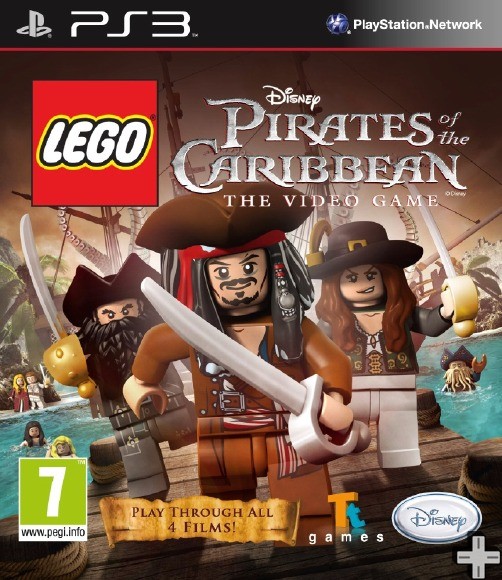
Everybody loves LEGO. From being a young child to rediscovering youth in adult life the sentiment remains. There is something about building those colourful bricks into something that resembles a miniature society that can only be described as fun. Videogames, for some, evoke the same emotions so it would only seem like a natural progression that the two may meet. This job was taken by Traveller’s Tales and have matched the two together with a spice from popular film franchises. The latest effort revolves around Disney’s seminal Pirates Of The Caribbean series.
LEGO Pirates Of The Caribbean is a retelling of all four of the Pirate movies with a comical LEGO spin. Starting with The Curse Of The Black Pearl the story follows the notorious outlaw: Captain Jack Sparrow, on the search for his beloved ship. From there he must plunge the depths of the high seas to heart of Davey Jones’ Locker and on to the Fountain of Youth. To aid Jack in his privateering, he must recruit just about everyone to contribute in some small way, even the prison guard’s dog.
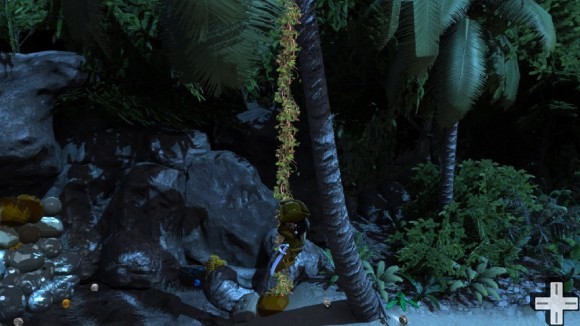
The environments are superbly built and with High Definition visuals really stand out. Everything is made from LEGO, which can sometimes be forgotten, until something blows up at least. While running through the levels a jaunty soundtrack inspired by the films is always heard, this again is worked into the game to give that extra dimension of gameplay. As fans of the LEGO games will already know, the game’s inhabitants don’t speak, instead only use sound effects to portray what is really going on.
Up to 50 characters can be unlocked throughout the levels and many have different skills. These come in handy when replaying levels as items previously unobtainable or extra parts of the levels can now be accessed. What this creates is a game that is not only big to play through on the story mode but also has a lot of replay value when it comes to finding all of the collectables in the game.
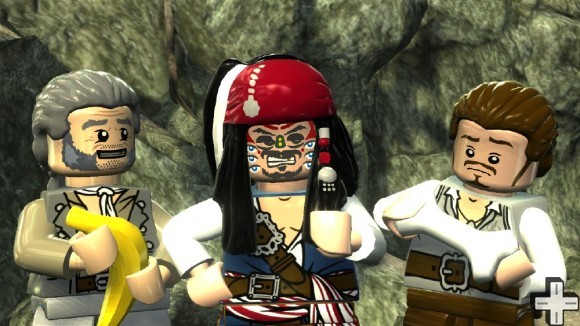
Finding every single item to collect is a tough challenge as each of the game’s environments are large and open. Only certain points are loaded at a time so there is a short wait for each portion to be loaded, which can get annoying if there is a lot of running back and forth to solve a particular tedious puzzle. These happen to be few and far between but can still be annoying nether the less. The characters that appear in the game interact well with the environments are more of a comical nature than those of the films. They are beautifully crafted and produce genuine laugh out loud moments – the scene involving Elizabeth and Jack get drunk on rum springs stands out above the rest.
The combat used in the game is simple and most of the minions can be taken with ease. Although, not spending hours on the bosses, LEGO Pirates Of The Caribbean should have made the bigger enemies harder than they actually are. They only present a slightly increased challenge to the normal enemies.When not swashbuckling, LEGO Pirates Of The Caribbean is confronted with puzzles. Usually requiring to build or destroy something they are often not too challenging but there are a few that do tax the brain.
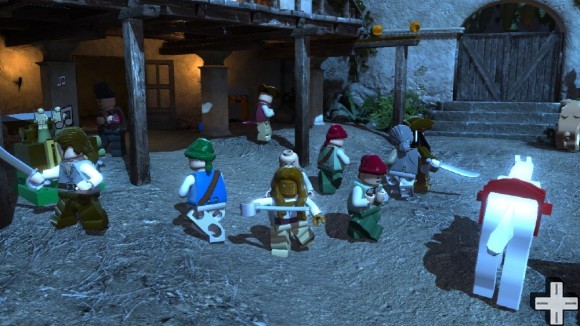
LEGO Pirates Of The Caribbean is a fun game to play and does last for an age. With a metric tonne of collectables there is a lot to go back to once the game has finished. The triad of Pirates, LEGO and video games works very well together, it provides an even more outrageous presentation the films on which the game is based. Characters such as Jack Sparrow, Balbosa and even Elizabeth Swan really shine with their comical attitudes to everything. If anyone has missed playing any of the Lego series then this one is one to try. Fans of the series may feel like this has been done before as there is not much innovation between the games, which is a shame because the game is a genuinely funny title.
Agarest: Generations of War Zero

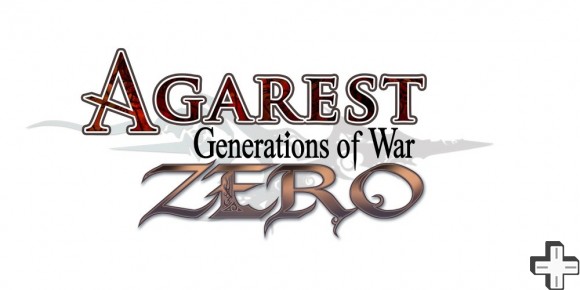
Agarest: Generations of War Zero may not be the most well-known title to spring out of Japan, however it brings to the table it’s own take on the J-RPG by drawing from the styles from games rarely seen in the western world. These elements make for a title that is not short on depth and has a story so involving, it takes an age to fully discover everything.
The game starts the as Japanese anime TV shows – with a 3 minute introduction to all of the main characters synchronised to a catchy pop song that was probably number one in Japan for 8 weeks. Once the title sequence is over, the game starts rapidly. The game is a prequel, set 1000 years before the events in Agarest: Generations of War. The battle between Light and Dark forces is fierce. Seighart is a commander in the Light army and is tasked with protecting a strange young girl named Mimel. As the game progresses, it becomes clear that Mimel is not all she seems.
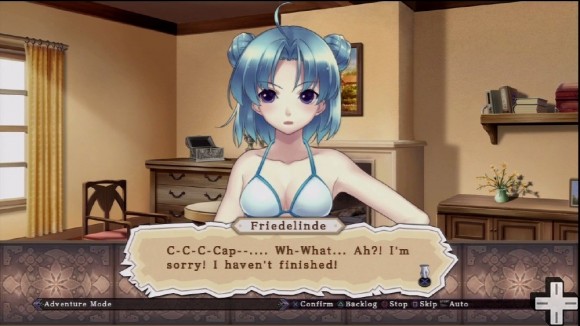
As with all RPG games, the main story is not just the main point of interest. Agarest also allows Seighart to actively pursue members of the opposite sex who are in the party. This may seem like a welcome distraction to war, but the clue to why this is important is in the title. Generations. The game is split into two sections. One is Seighart’s story. The other is his offspring’s. There is no right or wrong woman to woo, and who is chosen is determined by key decision making in the game. The progression to the next generation is a welcome change that keeps the story fresh and constantly moving.
The way the game plays is different to more westernised games such as Final Fantasy. In Agarest, towns and maps are not explored in the traditional sense, instead points are referenced and are clicked into. This means instead of walking aimlessly into a stranger’s house, the town is presented in a menu style. It is a simple case of selecting one of the many guilds or the all important item shop. It is a good way of trimming the game to providing the essentials, however not exploring the nearby town was one disappointing feature in the game.
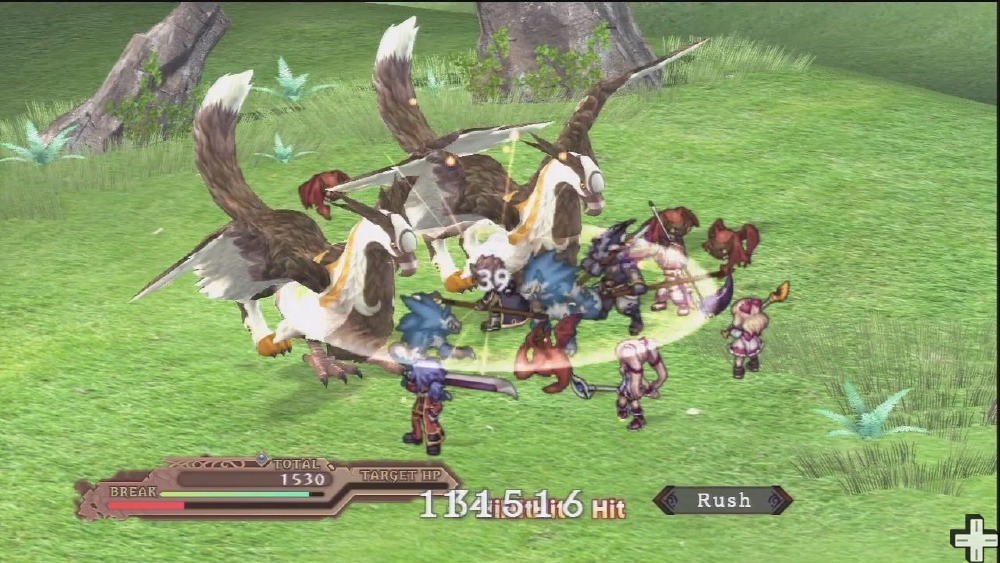
This was long forgotten when the battles commence. Battles are what sets Agarest apart from other RPGs. Like games of chess, the system works by carefully moving the piece into place, striking a balance so that attacks can be dealt while all the time protecting characters. Fans of the genre can draw conclusions that the encounters are comparable to Shining Force on the Mega Drive. It does expand on what Shining Force created many years ago with the inclusion of AP points. These points actually let Seighart and his cohorts uses skills they have gained. As battles draw on, combinations between characters can be created making for a stronger army.
It can take a while to get used to all the information and statistics that a battle throws out, time that could have been spent exploring towns. Once a clear understanding of the action system is gained then it does shift the focus back to the story as opposed to getting frustrated killing one Orc. Even less irritating is the exclusion of random encounters. The map is laid out and it is a case of moving from one square to the next. The word “event” appears every few squares or so, signifying either a battle or piece of story. The former being the most common.
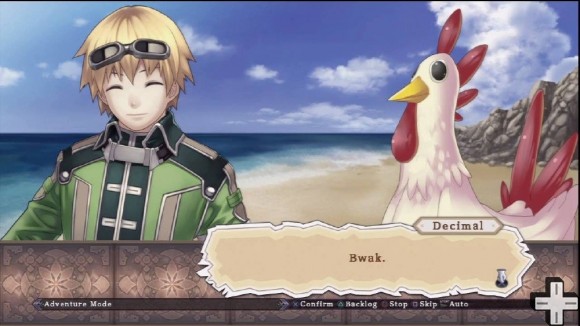
From the battles, to the non-towns, Agarest: Generations of War Zero is presented in a unique way. All of the scenery is rendered in the usual 3D style. When the characters are in story mode they are a unique mix of computer graphics coupled with anime stylings. The result is a polished character that still retains a hand-drawn style. They are lipped synced to real voice acting and what’s more is that they breathe. This does lead to some comical breast inflations from the females of the game, but what anime wouldn’t be complete without obvious animations saying “look at my boobs?”
What is strange about the art style is that in the background to the speech scenes or any of the in game cut scenes and even the battles themselves, is that they are presented like old two dimensional games such as Secret of Mana on the SNES. At first this seems lazy and hard to get used to but when the gravity of how big this game is hits, it makes sense that it is not just a throwback to games of old – it is in fact an attempt to preserve space for factors such as dialogue, story and sheer length of the title.

The box of the game states that this is an 80 hour game. To master the battle system and to fully complete the game, including all of the trophies will take longer. This again is a welcome change because that is how long games should last compared to the money that is paid out. Recently, games have been made shorter in length but the price has stayed the same.
Agarest: Generations of War Zero is a great game. It has a story that flows well and never takes itself too seriously. It has adapted ideas from RPGs of old and brought them to a new audience. The battle system – once mastered is brilliant, however mastering it does take time and patience and may not be the title for those who struggle with the RPG genre. The lack of exploration in towns is disappointing but considering the game lasts until the end of time itself, it is a begrudging but welcome sacrifice. The cherry on top is the change of character, passing the story from generation to generation.
MX Vs ATV: Alive

Motocross is a popular, if not well known sport in the UK. For those who don’t know, it’s off-road racing on powerful dirt bikes. Originally a time trailed sport from the United Kingdom, it became a full on race to make the sport more exciting. There are numerous jumps and tight corners to negotiate as well as the other racers competing for one place. An exciting sport, where last place riders are not far behind the leaders, unlike Moto GP.
It seems only right that a popular sporting title have it’s own video game so that fans can experience what the professionals feel every time they sit on their bikes and race for real. This is where MX Vs ATV Alive comes in. Developed by THQ, Alive is the fourth game in the MX Vs ATV series and sets it’s self as an officially licensed game for the motocross world. The idea, as with all racing games is to win. How this is done does not just depend on which bike is selected, but more on how the bike is then set up and the experience that the rider has gained.
After every race, the rider is given experience points depending on a number of factors such as where they came in the race or the difficulty of the competition. Also, the bike also gets experience. This means when it levels up, the dirt bike becomes faster and harder to fall off or “wreck”. The more experience gained in Alive means more circuits, dirt bikes and characters open up. There are literally hundreds of options to customise the vehicles and even the riders that sit on top of them. They range from suspensions, wheels & helmets all the way down to colour of the handlebars.
The available tracks at the beginning of the game is a disappointing shortfall. There are 2 main races, a handful of mini courses and two free-roam tracks. It takes a lot of work to level up high enough to unlock more. Some gamers could be put off by the game’s reluctance to reward for achieving goals. However sticking with game and unlocking the extra race locations does give a greater sense of achievement as it takes longer to get them!
There is a reasoning behind the lack of tracks to start with. It is due to THQ’s “hybrid” approach to the game. They have streamlined the game down to bring overall cost of the physical game down, to make it more attractive for casual gamers and added more downloadable content for the serious fans of the series. In principle it works, however they have taken too much out of it, adding in a couple more race courses and Alive could have kept the game a little more fresh for the gamers who may not want to purchase the extra content.
Number of race courses aside, MX Vs ATV: Alive does have superb visuals. The characters are designed in such away that they avoid looking like the skinny pipelined riders from games such as Road Rash or the huge blocky characters that resemble a NFL defensive line. When riding, the screen maintains it’s visual presentation. There is a little blur to push the sense of speed but at no point does the screen drop to anything less than smooth and sleek.
The courses in Alive are well constructed – fluid and simple enough to learn, however difficult to master. The game has a steady increase in difficulty when the AI level is selected. When racing this is clearly apparent and unlike some racing games where easy mode is far too easy and the hard setting is too hard and frustrating, Alive manages to maintain a constant challenge from other racers.
What really sets this game apart from others is the simple and intuitive control system. The Duelshock controller is set up more to a first person shooting game than a standard racing title. Using the L2 & R2 triggers to break and accelerate respectively, feels a lot more natural than pressing X and Square. The bike is controlled by the left stick and because the rider can be knocked around and unbalanced during a race, the right stick maintains the balance of the character. This also helps for cornering and performing stunts.
As mentioned there are two free roam modes which take a more relaxed approach to motocross. As the name implies, in free roam it’s just the rider and their bike. Instead of races, there are a number of challenges to complete in order to gain extra experience points. These areas also allow enough time and space to perform stunts. Using a combination of the control sticks and the R1 button, different tricks can be performed such as wheelies and backflips. It does take time to get used to the stunt system but it is an addition that feels tagged on as a last minute thought.
There is an online multiplayer mode, which works in the same way as the main races, however expect more collisions and an even more competitive experience as players are not grouped depending on experience levels. It is a free-for-all. There are not online exclusive tracks to play, it is a case of picking what is already available to ride. Load times on a decent internet connections are manageable even with players who use WiFi connections, there are also no incidents of slow down when the action got too intense.
MX Vs ATV: Alive is not just another racing game. THQ have managed to blend elements from other videogame genres, and for the most part, it works. The RPG element of levelling up to progress works well, although it can take a while to reap any rewards if extra content is not purchased. There are a lot of customisable equipment for both the bikes and the bikers. Enough options to try different combinations to find the perfect ride style. Solid graphics and an inspired control set up make MX Vs ATV: Alive a racing game that sets it apart from other similar titles. The stunt system feels tacked on and unresponsive, but makes the free roam modes a good change of pace. MX Vs ATV: Alive is firstly a game for the fans. Also because of it’s pricing point, newcomers can be assured this is one of the best games to introduce them to the world of Motocross.
Red Faction: Armegeddon

Red Faction Armageddon is the latest game in the Martian shooting series from THQ. Since it’s inception on the PlayStation 2 in 2001 Red Faction has changed the way first – and more recently third person shooting games work. The reason: GeoMod engine. This allows environments in the game to be destroyed using in game weapons to open up, or rather create new pathways to complete missions. This style of play has become synonymous with the franchise and has been improved on greatly for Red Faction as now GeoMod 2.0, not only allows the scenery on Mars be blown to space, it can also be repaired… and blown up again!
Set on Mars, Red Faction: Armageddon takes place 50 years after the events in Guerrilla, the war of control for the red planet still rages on. The Martians rely on the Red Faction to keep them safe from the EDF – the Earth Defence Force (sadly not the utility company). Darius Mason is a soldier in the Faction and the game’s protagonist. After being sent on a mission to stop cultists from destroying the terraformer – the source of all of Mars’s liveable atmosphere – Mason is lured into a trap by Adam Hale. Hale, who is angered by Mason’s grandfather killing his father in Guerrilla is out for revenge and will stop at nothing to not only avenge his father but to destroy Mars itself.
Once the game starts, Darius is faced with two missions, clearing his name for the Terraformer incident and finding Hale and stopping him and the cultists from causing anymore damage to Mars. What proceeds is a linear shoot-story-shoot-story game that involves a little exploration to find a collectable or two. Some may take this as a bad thing, however THQ have made sure they have a balance between the two. Action scenes are spaced apart in such away that they are not repetitive but still often enough to keep attention. Sheer numbers of enemies also increase as the game moves on. This increases difficulty as Darius is constantly trying to fight off the various creepy-crawlies and then one kills him from behind. This can get annoying as each restart completely reloads the last checkpoint. So a lot of time can be spent looking at loading screens.
Environments in the game that THQ have created perfectly represent the moody atmosphere of the game. There is a balance of crudely built shanty towns, dimly lit underground areas. The industrial elements on Mars are not so overly futuristic they are unbelievable. The game is completely voice acted and in some games this can be a problem, as there’s the tendency for over acting rather than restraint. This is not the case for Red Faction, each actor is cast in a way that fits the character profiles. Mason being the confident army type, while Hale comes across like the psychopath that he is. One thing to note about the voice acting is that during cut scenes can suddenly change, one second it is at a normal volume, then suddenly dropping to an almost inaudible sound. This could be the copy that was played so take this with a pinch of salt, however there are subtitles that back up what is being said.
The controls are simple and intuitive to use. Each button is placed logically and nothing feels out of place or an inconvenience to reach. The targeting and shooting couldn’t be simpler and actions such as dodging, reloading or even jumping are just a button tap away!
Online multiplayer in Red Faction provides a welcome break if the action gets overwhelming or if the annoyance of constantly watching loading screens gets too much. This is broken down into two types of game: Infestation and Ruin. Infestation is a Horde-mode where up to four players co-operatively team up to defeat waves of oncoming enemies. This is much like the action sequences in the main game however at the start of each wave the players can choose which ever weapons that are available to them.
The best of the two modes is by far Ruin. The aim is simple – destroy as many things up in one minute as humanly possible. There is unlimited ammunition and the biggest guns to choose from to aid in this. After the minute, the score is calculated and submitted a leaderboard. However one problem with this is that there is slow down if too many rockets are set off at once. The other problem is that when the game is purchased, there is only a demo of Ruin. To unlock the full mode, a code has to be purchased through the game.
A lack of competitive multiplayer is a let down in Red Faction but it is more than made up for in the two multiplayer modes that are presented. Unfortunately a lack of offline multiplayer is a massive let down for the game. This is something that could have easily been added and yet for some reason it is just not there.
Red Faction is an enjoyable game, the story mode while a tad too linear has a brilliant mix of action and story elements. The controls really do standout, as they are responsive and with the targeting system, makes short work of disposing the game’s enemies. It is by no means a short game either, providing at least 20 hours of gameplay. Once the game is completed however there is little to replay. Most, if not all of the trophies can be picked up first time round and once the story is revealed, there is little motivation to watch it again.
What will keep the game in the PlayStation is the multiplayer. The lack of offline multiplayer is a sin, however the online multiplayer does shine. Infestation is enjoyable with 3 other players competing for the same goal and Ruin mode is like being a child in a sweet shop all over again. This will make sure Red Faction Armageddon is not forgotten.
Moon Diver

Final Fantasy, Dragon Quest and The Mana series are games that spring to mind when Square-Enix are mentioned. There is one thing in common with those titles, the RPG element. They have the genre down to a tee and it is a rare and refreshing to see them attempt something that they are not accustomed too. Moon Diver is one of these games, even though it still has some of the Role Playing Game in it’s blood, it is a far cry from Final Fantasy.
Moon Diver is set in a post-apocalyptic world where Faust – a boy who uses the power of Mephistopheles to breath life into inanimate objects such as cars, trains and even entire cities to destroy humanity until no one is left. Now only creatures created by Faust walk the streets looking for the humans to finish off. Enter the Moondivers; an elite Ninja force whose orders are simple: Destroy Faust and reclaim the planet thus saving humanity.
As each level progresses, manga-styled cut scenes are used to tell the story. Each cutscene reveals more story and it becomes clear to what has happened and what is yet to unfold. This is a different take to the usual animated sequences that Square-Enix are known for. However, this does feel somewhat lack lustre and out of place compared with the in game visuals.
What follows is a two dimensional hack-and-slash game where players battle through hundreds of enemies. The controls are very simple: The left control stick moves the player, X to jump, Square to swing the Moon Diver’s weapon, R2 shoulder button rolls the character and the Circle button casts magic spells. The magic is available to help the Moon Diver in a number of ways; it can attack directly, help to restore the Ninja and even disable enemies for a quick regroup. With more than 50 spells, littered across the levels and need collecting, they allow for a quick, short-lived burst of power at needed moments.
In true Square style they couldn’t resist putting in a touch of the RPG. As enemies are defeated experience is gained and once the gold bar fills they level up. This has two effects for the Moon Diver; firstly a Character Point is awarded for each level raised which are spent on raising HP, MP and Power. Secondly, the number of combination hits a character can do will increase, however this will not happen at every level up.
Getting through the massive environments is relatively easy however the bosses at the end of the levels are frustratingly hard and usually result in death and the restart of the level. The constant restarts do get tiresome in single player mode however the multiplayer on the other hand is where Moon Diver really shines. Local Mode is up to four people in the same room playing the story mode. Online Mode is the same; however, there is the choice of dropping into and existing game. Even though the Moon Divers work together to progress through the level there is an element of competition as everyone battles for the experience by dispatching the most enemies.
Moon Diver is well designed game with a feel of old classic games such as Golden Axe and Streets of Rage. Playing the single player game does get repetitive. The multiplayer does add longevity to the game as it eases the boss battles and pushes the story forward rather than playing the same level over and over. Those expecting a fantastic story will be disappointed as it is little more than a link to the next level.
3D Twist & Match

iOS games have cleverly been snapped up and replicated on the PSP of late. Sony has taken the initiative in bringing popular titles over from the iPhone and Android such as Angry Birds and making them available via the PSN as Minis. This allows the games to be played on the bus or train and save the battery on the phone; after all, most Smartphones have a terrible battery life. Instead of fighting against the growth of mobile games, Sony is embracing it.
Enter 3D Twist & Match. This simple puzzle game has one aim: to match randomly generated objects with the silhouette behind. This sounds straight forward on its own; however, as the game has the little “3D” word in the title, it’s not as easy as you think. Using the analogue pad items are rotated 90 degrees, the shoulder buttons are used to turn the object either clockwise or counter clockwise. Once matched, another object appears and you repeat the process.
3D Twist & Match has three main modes: Classic, Rush & Practice. In classic mode the objective is to match as many items in the time given and points are awarded for the speed in which this is completed. Rush mode is more challenging, this time you have seconds to complete each puzzle before the game moves on, as practice mode sounds it’s where players head to well practice and get used to the control system of the game.
3D Twist is a port of the popular iOS game and whilst it well suited to the iOS, the fact that it’s been ported to the PSP shows. The graphics are not up to titles developed only for the PSP, with the imagery more suited for the original PlayStation than a portable device that’s more powerful than home consoles released a decade ago. The soundtrack certainly isn’t a Koji Kondo or John Williams piece, if anything it’s more suited for a time when basic MIDI sounds were as good as it got. Getting to grips with the controls aren’t nearly as easy as swiping your finger in the direction you want to twist the object as found in the mobile version.
Even with the bland graphics, the game is simple and effective enough to keep players hooked; however, it’s not a long term addiction. If played on the train on the way home from work it would definitely make the commute go that much faster but outside of a travelling scenario the game the longevity of the game comes into question. It quickly becomes stale and would be put down quickly if trying to play for hours on end.
For the most part, iOS games are intended to be played in small doses on a fairly small screen The translation between mobile device and handheld device has made the title loose it’s way. Unlike games like Angry Birds, where there’s a goal and something constantly pushing you forward; yet, with 3D Twist, once the items are matched up there’s nothing left than to play it again and try and be a bit faster.
3D Twist and Match is only 22Mb in size so it will not be filling up much memory on the PSP and for the price paid, you cannot really moan. It is fun while it lasts however it becomes repetitive if played for more than 20 minutes at a time.
Sanuk Games have created something that has the potential to be a great miniature game on the PSP however as it is a direct port from an iOS game the game feels rushed and not executed to the standard of the handheld platform. If a little more time was spent on refining the game it would bring it from a good little game in short bursts to a must own.
Chime Super Deluxe


To say that Super Chime Deluxe is a rip from Tetris would be doing the game an injustice, as it’s a completely different game. Yet, it’s impossible to look at the game without immediately thinking of Tetris, because the game uses blocks that need to be linked together before they’ll disappear. That’s where the similarities end.
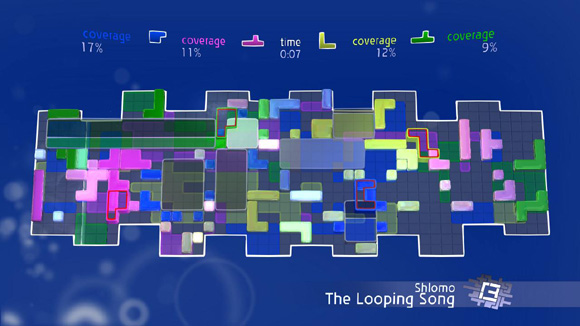
The premise of Super Chime Deluxe is somewhat simple. The player is presented with a grid, a number of shapes, both in various sizes and combinations and the entire grid must be covered with the shapes inside of the time-limit. Fortunately it’s not a case of trying to fit shapes into the grid like a puzzle, if the gamer can make the shapes form a 3 x 3 block, it will disappear and the background colour on the grid will change. The change in colour represents that part of the grid has been completed. Once the grid has been changed colour 100%, a new grid will load and the process starts again.
Each level has an almost unlimited number of grids and each of the levels designs vary quite dramatically, as the music for each level is completely different. Music is a key element to the game and there are various different established artists’ tracks that contribute to the game. There are some well known songs are sampled and adjusted to make them fit for purpose, even artists like Moby have allowed their tracks to be used. Of course, the songs themselves may be familiar to some but due to the changes of the tracks, they are now significantly different. At the start of most levels the music is fairly relaxing and at the end of the levels they are very good as well; however, part way through the grid, some of the levels’ music can be somewhat grating due to the repetitious nature of the cycle.
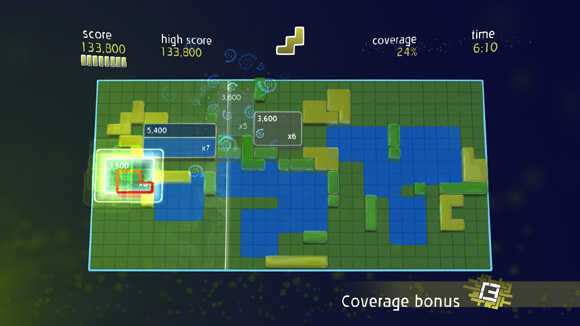
In the first instance, there is little but background music of the song, with few notes or delicacies to indicate that it’s a true song. As the player adds shapes to the grid, the music starts to change and when a block has been completed, the music changes again. This is achieved by a tracking bar that scans the grid continuously and the music changes as the grid hovers over it. By the end of the grid the player can hear what the music for the game truly sounds like and with each level being different, from classic dance to beat-boxing there’s a plethora of music to listen to.
Although Super Chime Deluxe can take a little time to get used to, the game itself is incredibly enjoyable. This enjoyment is only increased as we go into the multiplayer mode. There is a co-op mode and a challenge mode, where up to four players can battle or help each other complete the grid. Unfortunately if you’re playing in the co-op mode, if a level is completed the points are saved, but it’s a good way to try and get some of those unachievable trophies. The challenge mode is exactly the same as the regular mode of play, except each player needs to get as many blocks as they can and own the majority of the grid and they can steal other player’s blocks from them as well. In the challenge mode the colours used can sometimes conflict with the background on the grid and make it hard to understand what needs to be completed and how far along in the game you are.
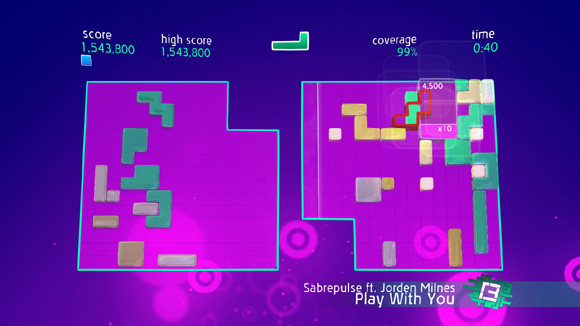
The actual gameplay itself is very basic and easy to understand, it might take a few turns before you fully understand the game and what to do. Even with the very good instructions and basic tutorial it can still take a while before it all sinks in. Chime also has a good number of Trophies to collect, great interface and just plays and it plays for hours.
Final Verdict
9/10
Chime Super Deluxe is an amazing game, with tons of music, great gameplay and a brilliant multiplayer option Chime is a must for all PlayStation 3 owners. It’s just a real shame for other console owners that they can’t experience this great title.


